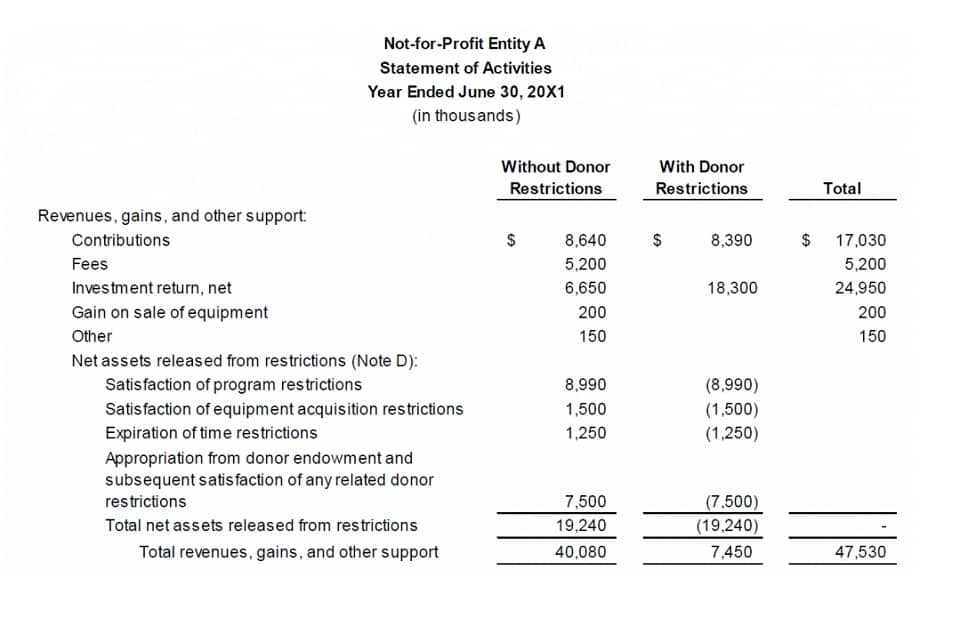
For example, a stock can be converted to cash within a few days but a fixed asset such as a building or land could take weeks, if not months, to convert to cash. This order is for a for-profit company but nonprofits follow a similar outline. If your operating budget is your church’s master financial plan, financial statements are your church’s master fiscal reports. Each statement organizes and summarizes your church’s fixed assets data in a different way to provide insights into its financial situation. These categories are based on the Unified Chart of Accounts (UCOA), a nonprofit-specific, standardized sample chart of accounts. However, many churches find the UCOA too detailed and are better off using other church-specific templates that they can customize to meet their needs.

Best Worship Conferences for Church Leaders in 2024
- For example, you may want your finance committee to view your financial reports in full detail, with enough transparency to satisfy their compliance and oversight role.
- You might want to have an account for each ministry team that might receive income or incur costs.
- Multi-campus churches will want to use a location dimension in their COA to identify various campuses.
- According to BusinessingMag, 92% of churches create financial reports, but very few share them with their congregation.
- Income accounts are sources of funding or monetary receipts.
- To learn more about ChurchBooks3 Church Software, check the official website or contact the organization or developer directly.
Most committee spending can be isolated within the chart of accounts and then coded to produce a committee report. As you review the chart of accounts, you will see that I have been arbitrary, but not capricious. We are forgoing tidiness to come up with a financial picture of the community which, if vague on the edges, carries a deeper message.
Advanced Topics in Church Bookkeeping

Consider holding a training session to go over the basics. A church accountant must be careful when keeping records on restricted and unrestricted funds. If you remember, restricted funds are funds designated to specific needs. Church leaders should also set up a system to ensure reports are reviewed monthly, quarterly, or annually. That way, leaders will know when to expect reports further breeding optimal transparency. Churches should create statements and reports for reviewing purposes.
Features to Look for in Church Accounting Software
There’s outdated information/terms, it’s not well organized, and it’s difficult to make any financial decisions after considering it. An expense is the cost of operations that a company incurs to generate revenue. Organizations may have different internal controls depending on their financial needs and systems. Here are some other ways to manage finances with limited resources.

To develop an ideal structure of cost centers, review your strategic plan (if one exists), organizational chart, and previous budgets. If a formal organizational chart doesn’t exist, map one out quickly by hand. Have a brief discussion with senior and executive pastors about how they see the vision, plans, and org chart changing over the next three to five years. Structure your financial systems to wholly support your mission work and enhance the effectiveness of your organization. My rule of thumb is that if there are very few separate transactions being recorded in a particular account each year, it isn’t doing much work for you.
- Choose the system that is best for you based on your church size and financial goals.
- Consequently, it is important to review the various account categories periodically and to add, diminish, or re-sort them based primarily on an updated view of congregational life.
- The following is a list of expenses that aren’t related to the church’s operations.
- We also defined equity as fund balances, different than for-profit accounting and owner’s equity.
- This ensures transparency, helps track fund usage, and builds trust with donors by showing that designated gifts are used appropriately.
- Keep in mind ‘revenues’ and ‘other revenues’ work the same way, as do ‘expenditures’ and ‘other expenditures’.
- You need to be able to quickly and easily generate reporting data.
- A fund is a designated accounting entity to fulfill a particular purpose and has it’s own income and expenses.
- An account is a unique record for each type of asset, liability, equity, revenue, and expense.
- For example, a stock can be converted to cash within a few days but a fixed asset such as a building or land could take weeks, if not months, to convert to cash.
- This is usually the balance of each account at the start of the fiscal year.
There are five common areas in the church’s chart of accounts in any organization. The five sections are assets, liabilities, owner’s equity (net assets), income, and expenses. It shows how the debits and credits move the account depending on which account you use. In other words, if your entry is a credit to revenue, then the revenue account increases.
Essentially, the dates of the expense and when the cash leaves the organization can be in two different months. The bookkeeper completes an accounting entry when a bill is church accounting received. This entry hits the appropriate expense account and the accounts payable account. The expense is realized with the appropriate date and moved to accounts payable. However, the money doesn’t leave the checkbook at this time.

Over the last two decades, virtual accountant Josh has worked closely with pastors and other christian leaders, helping them to sharpen and elevate their messages. Today, Joshua pastors at New Life Fellowship, a thriving church he helped plant in Cambridge, Ontario, Canada.






















